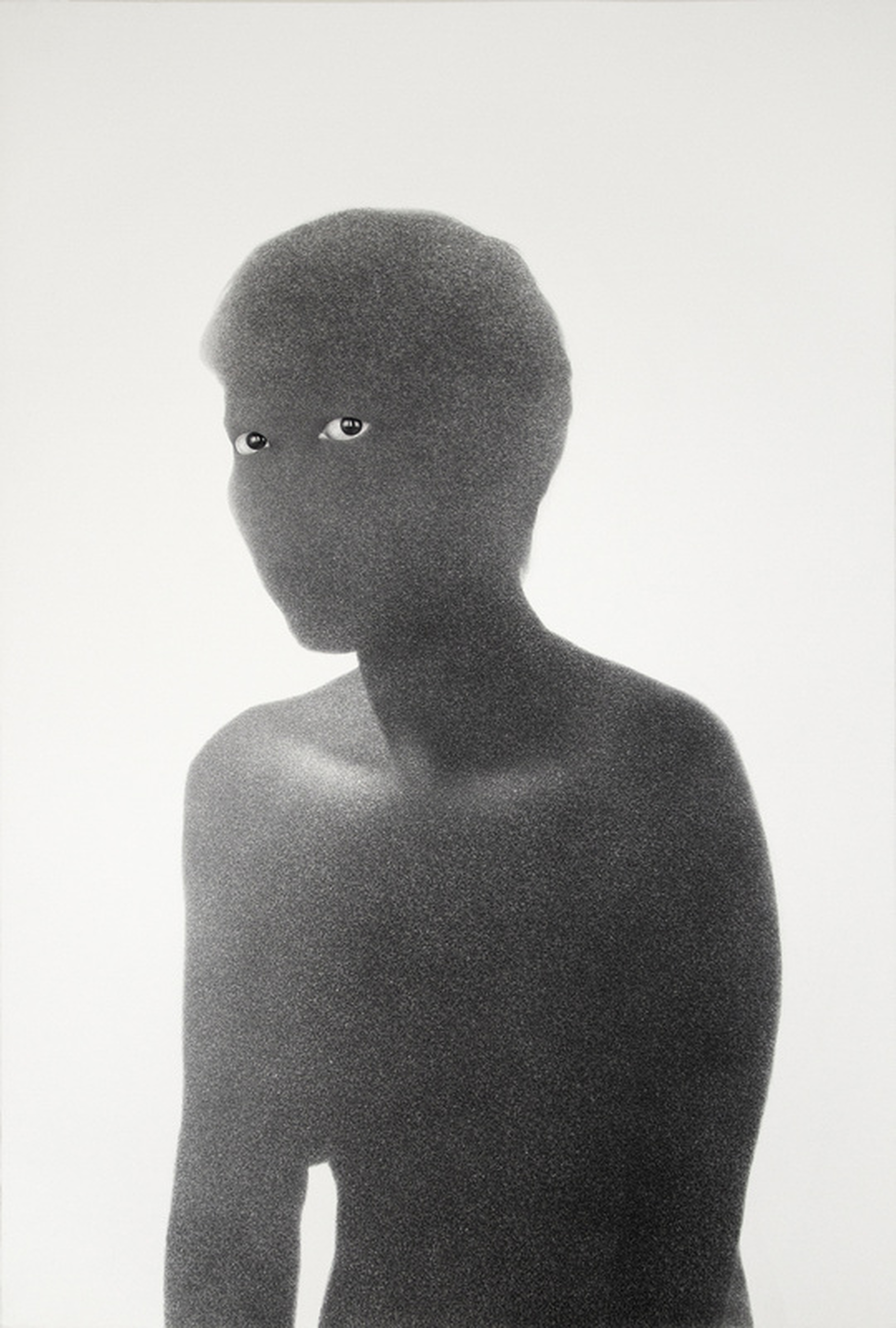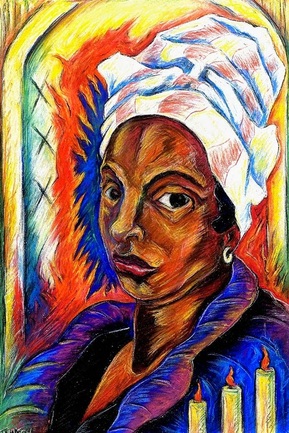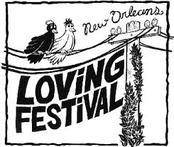| The USA Network recently announced the recipients of the 2014 Characters Unite Awards. New Orleans Loving Festival Founder, JERALD L. WHITE was among the ten winners selected from hundreds of nominees for their extraordinary efforts to combat hate, intolerance and discrimination, and making significant contributions to promoting greater tolerance, respect and acceptance in their communities. Characters Unite Honorees will be acknowledged during hometown award ceremonies and will receive $5,000 grants from USA Network and distributor partners – Bright House Networks, Cablevision, Charter, Comcast, Cox Communications, Mediacom, Suddenlink, Time Warner Cable - to support their projects or related nonprofit organizations. Additionally, honorees will be featured on-air in a PSA... MORE>>> |
|
Artist Samantha Wall at Stella Jones Gallery by Jeri Hilt
In our interview she discussed the palpability of shame, and it’s evidence in her own life. For Wall, this concept has been linked more directly with the country of her birth. Born in Korea and relocated to the U.S. at the age of four, Samantha Wall moved around quite a lot, and resided in Fort Jackson, South Carolina for most of her childhood. For a time Wall never questioned her parentage and believed that her white stepfather, also the father of her siblings, was also her father. However, in 2009 Wall took a DNA test, and discovered that her father was a man of African descent. Traces of European and Native ancestry would imply that he is also, most likely African American. Samantha explained that finding out her father’s ethnic background was significant in ways that she had not anticipated. Even before she knew that she was both Korean and African, Wall describes feeling lobbied between cultural groups rather than feeling a part of them. This confluence and fracturing of identity is an observable theme in this collection. Included in her show is an astonishing self-portrait. Only her eyes are visible to the viewer, while the rest of her own image is a silhouette blacked out in charcoal. The title of the portrait, What I Can’t See, reveals what is otherwise invisible to the viewer, and Samantha herself. This level of honesty and vulnerability in art and the socio-political constructs of race forces us all to reconcile its incongruence, and the falsities embedded in who we perceive both ourselves and each other to be—especially when those perceptions are based on phenotypic observations. Wall’s art exposes and deconstructs socially and politically constructed barriers that regularly impact how we engage with individuals of color. The presence of her work in New Orleans exposes and reveals these concepts in another environment. The portraits belie the inaccuracy and conceptual limitations of deeply entrenched notions of race and ethnicity. As an artist of color who is also a woman, our greatest artistic challenge is to represent women of color, however they identify, in their complete humanity. For Wall to accomplish this in a two-dimensional art form is both rare and exceptional. More than portraits, her work renders all women visible in liberating ways, Indivisible. Samantha Wall lives and works in Portland, Oregon. She is married to video and installation artist Stephen Slappe. For more information about her work visit: www.samanthawall.com. Wall's exhibit is part of the 4th Annual New Orleans Loving Festival and will run through July 31st at Stella Jones Gallery - 201 St. Charles Avenue, New Orleans, LA. www.stellajonesgallery.com
Jeri Hilt is a former lecturer of African Studies and International Development issues at Tennessee State and Dillard Universities. She has also worked with research, development, and teaching projects in South Sudan, Kenya, Burundi, and the United Kingdom. Hilt, a Louisiana native, currently teaches literacy intervention at an elementary school in New Orleans. #lovingfestival Local art exhibits highlight mixed race identity
Global Mixed Race, the third biennial Critical Mixed Race Studies Conference, will be hosted at DePaul University in Chicago, November 13th-15th, 2014. It will bring together scholars from a variety of disciplines around the world to facilitate a global conversation about the transnational, transdisciplinary, and transracial field of Critical Mixed Race Studies. MORE>>>
Love Is All We Need: “Of Many Colors” at Antenna Gallery By Genjamin Morris Some names just seem to fit like a glove: the New Orleans Loving Festival, now in its fourth year, draws its name from the 1967 Supreme Court case of Loving v. Virginia, a suit brought by an interracial couple that ended race-based legal restrictions on marriage in the United States. Celebrating the many manifestations of love while at the same time exploring the complexity of identity in contemporary America, this year’s festival includes the traveling exhibition “Of Many Colors: Portraits of Multiracial Families” by Gigi Kaeser and Peggy Gillespie at Antenna Gallery. Quiet yet provocative, the installation contains nearly two dozen color and black-and-white prints of Kaeser’s photographs accompanied by interview transcriptions from a 1997 book on the topic, collected and edited by Gillespie. The photographs depict families of varying size, typically clustered together in warm, affectionate poses, shot both in domestic interiors and in public exterior settings.
Though the exhibition claims that it has a “great deal to teach about racial identity and racism,” its images rarely preach. What makes them so powerful, in fact, is their buoyancy: families laughing, talking, reading, playing, and hugging. Some of the portraits are of biological families, others of adoptive families, still more of long-term partnerships both with and without children, but one thing is common across them all: the care, joy, and love the individuals in these portraits all have for one another, irrespective of the color of their skin, the texture of their hair, or their ancestral roots. They are a striking contrast to the photographs of Ku Klux Klan rallies that belong to the exhibition “Mixed Messages.4” in the adjacent hall, evoking midcentury white supremacist fears of race mixing and “mongrelization,” even as the Kaeser photographs show the horrific consequences of such abominable acts: happy, smiling children, some of whom are even standing on their heads. MORE >>> |
The New Orleans Loving Festival is a Multiracial Community Celebration & Film Festival that challenges racism through outreach and education. The "Loving Festival" is an initiative of Charitable Film Network.
Contributors:JW Bottletree Archives
January 2017
Categories
All
|







 RSS Feed
RSS Feed